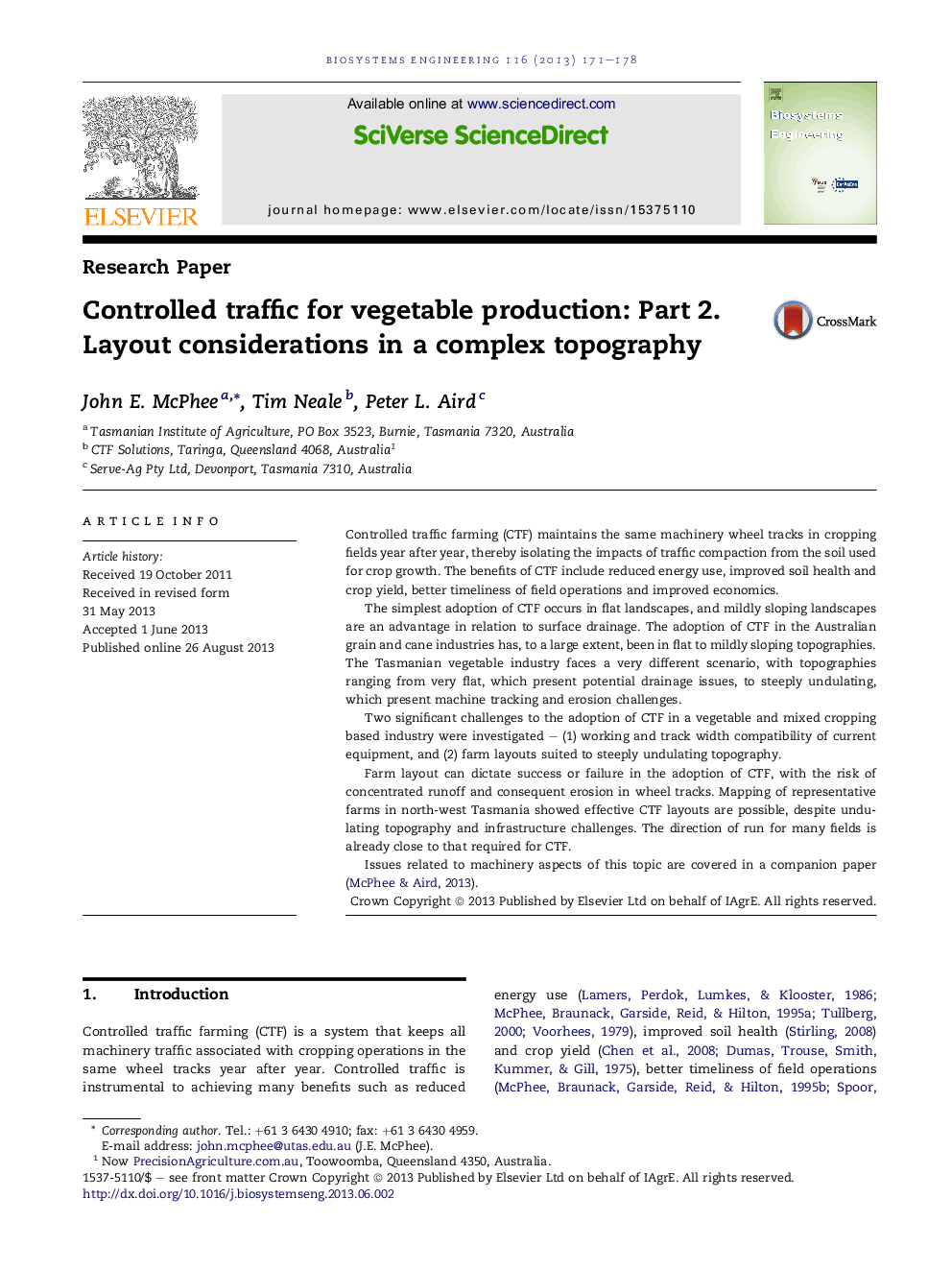| Article ID | Journal | Published Year | Pages | File Type |
|---|---|---|---|---|
| 1711273 | Biosystems Engineering | 2013 | 8 Pages |
•Complex topographies present challenges to effective controlled traffic layout.•Working up and down slope assists layouts in complex topographies.•Strategic surface drainage is a key issue in effective controlled traffic layouts.•Many undulating farms can achieve controlled traffic layouts with minimal change.
Controlled traffic farming (CTF) maintains the same machinery wheel tracks in cropping fields year after year, thereby isolating the impacts of traffic compaction from the soil used for crop growth. The benefits of CTF include reduced energy use, improved soil health and crop yield, better timeliness of field operations and improved economics.The simplest adoption of CTF occurs in flat landscapes, and mildly sloping landscapes are an advantage in relation to surface drainage. The adoption of CTF in the Australian grain and cane industries has, to a large extent, been in flat to mildly sloping topographies. The Tasmanian vegetable industry faces a very different scenario, with topographies ranging from very flat, which present potential drainage issues, to steeply undulating, which present machine tracking and erosion challenges.Two significant challenges to the adoption of CTF in a vegetable and mixed cropping based industry were investigated – (1) working and track width compatibility of current equipment, and (2) farm layouts suited to steeply undulating topography.Farm layout can dictate success or failure in the adoption of CTF, with the risk of concentrated runoff and consequent erosion in wheel tracks. Mapping of representative farms in north-west Tasmania showed effective CTF layouts are possible, despite undulating topography and infrastructure challenges. The direction of run for many fields is already close to that required for CTF.Issues related to machinery aspects of this topic are covered in a companion paper (McPhee & Aird, 2013).
